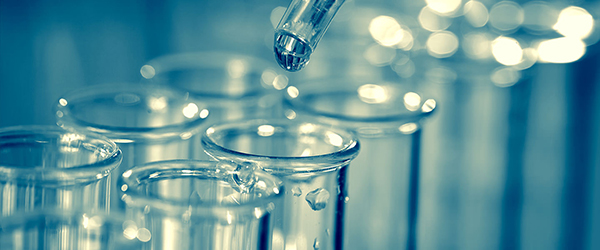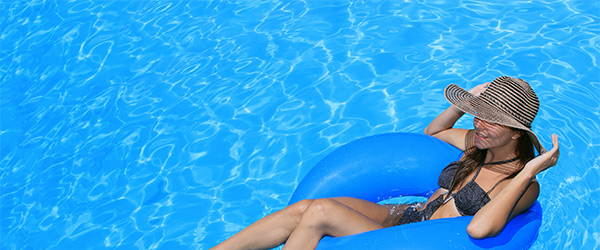Taking Care of Your Pool the Right way
Pool Chemistry
& Chemical Treatments

Chlorine
Used to disinfect a pool. It works by breaking down the microorganisms in your pool on the cellular level. There are four different types of chlorine commonly used in pools today: gas, liquid, tablet, and granular. Gas is still used in older larger pools, but is not recommended, since it is dangerously acidic. Liquid chlorine is good for large commercial pools; tablets are more stabile and effective for residential pools, and granular chlorine is ideal for vinyl pools, but is expensive.
The ideal chlorine level is 3.0 ppm, with an acceptable range of 1.0 - 5.0.
pH
Is the scale used to measure the relative acidity to alkalinity of something. The scale ranges from 1 - 14 with 7.0 being neutral, like "pure" water. A low number is an acid, like lemon juice, which causes corrosion; and a high number is a base, like milk, which causes scale.
The ideal pH level is 7.5, with an acceptable range of 7.2 - 7.8.
Alkalinity
Is the measuring of the pool water's ability to resist changes in its pH level. How well can the water balance itself? Sodium bicarbonate is used to increase the levels of Total Alkalinity.
The ideal range is 80 - 120 ppm (125 - 170 ppm for vinyl & fiberglass).
Stabilizers (Cyanuric Acid)
Also called conditioners.
Used to enhance the effectiveness of chlorine based sanitization systems, by protecting the chlorine from UV rays, which break down chlorine's ability to sanitize the pool water.
The ideal level is 50 ppm.
Calcium Hardness
Is the amount of the alkaline earth metal found in your pool water. If the water is too "hard" then it becomes too saturated and will deposit calcium carbonate, a whitish crystallized rough area on any pool surface. If the water is too "soft", then it is under-saturated, and will aggressively attempt to pull calcium from any pool surface to create balance. This can be very corrosive to your pool walls.
The ideal range is 200 - 400 ppm.

Accurate chemical treatment from professionals! — 850-832-9000
Other Common Pool Problems
Algae
Yellow, black, red, or pink particles floating in the water or on the surface of the pool.
Vacuum pool floor and remove all debris. Brush walls and floor of pool. Shock with algaecide and keep chlorine levels high and pH balanced.
Mineral/Metal Stains
Can color the water or make cloudy. Settles on to pool surface in a stain if colored, or in a scale if not colored.
Use a sequestering agent (chelators) for pools that have high levels of metals or use well water to fill the pool.
Organic Matter Stains
Outline marking of a worm, leaf, etc. Marking is imprinted on to the pool surface itself.
Sprinkle with granular chlorine and it will come out.
Foaming Water
Foam appears on the surface of the pool. Caused by soft water, high TDS, oils, chemical imbalance.
Correct the water balance to proper levels and use an anti-foaming agent. Cloudy Water (Turbidity)
Hazy or dull reflection to a milky white color.
Caused by poor filtration or imbalanced levels or high TDS levels.
Use a clarifier to coagulate small particles into filterable pieces. Extreme cases should use lithium or sodium hypochlorite and run the filter a lot.
Conclusion
Whenever you are experiencing issues with water clarity, purity or quality, it's best not to ignore it. Field Day Pool Services will be glad to consult with you on a case by case basic. Contact us today.

